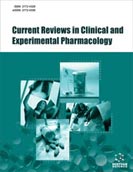Abstract
Background: The outlook on “Nano-materials, products, medicine and technology” lacks a consensus on the definition to be considered by regulatory bodies all over the world. Engineered nanoparticles, the formulated products containing nanomaterials, are not subject to any precise regulation pertaining to production, handling and labeling till now. Also, nano medicines holding an immense potential involved in treatment and diagnosis with emerging research, yet, lag behind with unnoticed concerns regarding their safety and toxicity. Therefore, a regulatory framework focused on specific guidelines for products with the application of nanotechnology is being designed for extending the immense benefits of nanomedicines to humanity. Regulatory bodies have taken the forefront in dealing with the risks associated with nanomedicines, including the United States Environment Protection Agency (EPA) and the US Food and Drug Administration (USFDA), and the Health and Consumer Protection Directorate of the European Commission (EC).
Objective: The study aimed to depict the current status and suggest future perspectives of nanomedicine, by compiling the guidance of different regulatory bodies, thereby, eliminating the vagueness of nanotechnology in regulatory terms.
Conclusion: Ambiguity continues to prevail considering the regulations and safety of nanomaterials. Therefore, it becomes vital to facilitate the harmonization of assessment practices for nanomaterials with a unanimous opinion. On global level, OECD and its Working Party are currently dealing with manufactured nanomaterials.
Keywords: Nanomaterials, nanotechnology, regulations, nanoparticles, unanimous opinion, nanomedicines.
[http://dx.doi.org/10.2139/ssrn.2264056]
[http://dx.doi.org/10.3762%2Fbjnano.9.98] [PMID: 29719757]
[http://dx.doi.org/10.2788/678452]
[http://dx.doi.org/10.1007/s11569-013-0181-7]
[http://dx.doi.org/10.1201/b11833 ]
[http://dx.doi.org/10.1021/es303591x]
[http://dx.doi.org/10.1007/s13273-016-0027-9]
 29
29





